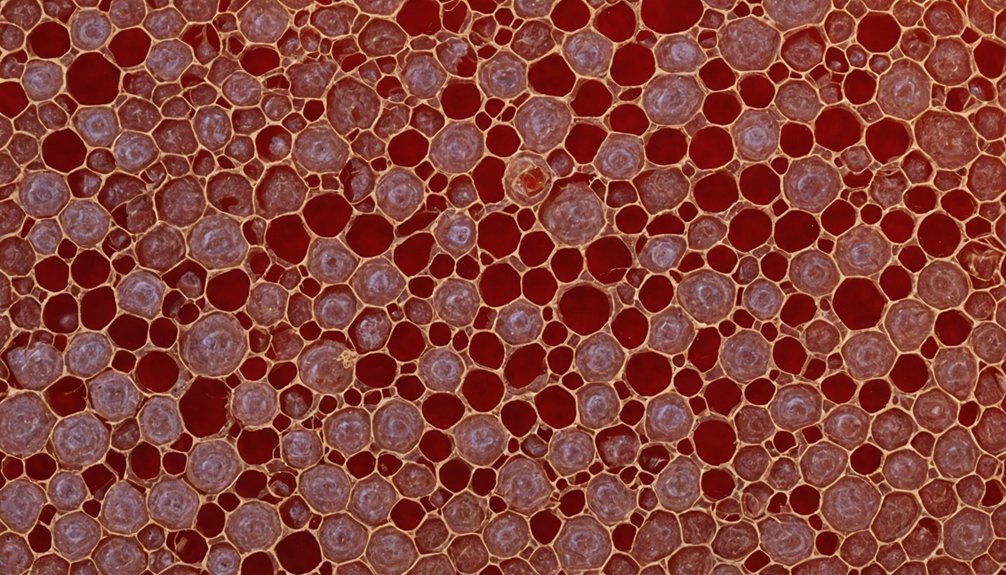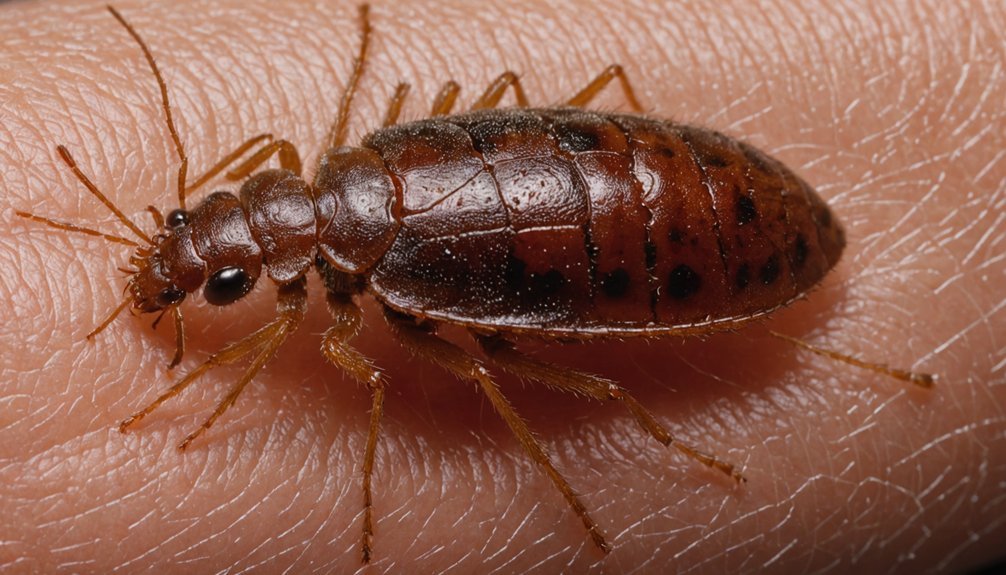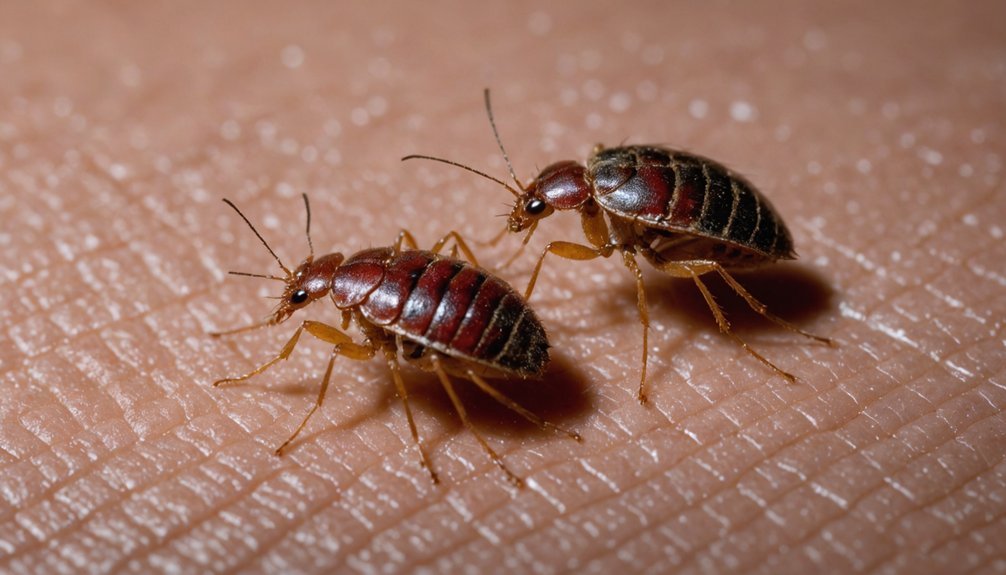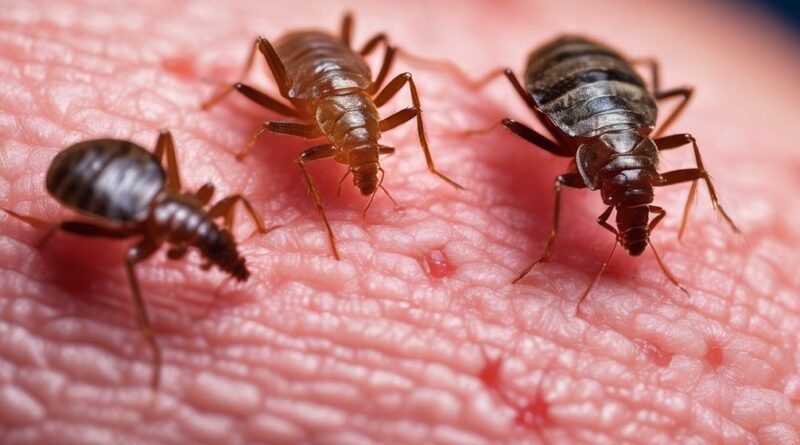Bed Bug Bites Vs Mosquito & Flea Bites: How to Tell the Difference
If you’ve woken up with mysterious bites, you’re likely wondering what tiny pest is responsible. While bed bugs, mosquitoes, and fleas all leave their marks on human skin, each creates distinct patterns that tell a different story. Understanding these subtle differences won’t just satisfy your curiosity – it’ll help you tackle the problem at its source and prevent future encounters with these unwanted guests.
Key Takeaways
- Bed bug bites appear in lines or zigzags of 3-5 bites, while mosquito bites are random and flea bites form dense clusters.
- Bed bug bites take days to appear, mosquito bites show immediately, and flea bites develop within hours.
- Flea bites concentrate on lower legs and ankles, while bed bugs and mosquitoes target exposed upper body areas.
- Bed bug bites are raised bumps with dark centers, mosquito bites are puffy, and flea bites show bright red centers with halos.
- Bed bug bites often appear where skin touches bedding during sleep, unlike mosquito and flea bites that occur anywhere.
Identifying Bite Patterns and Arrangements

When trying to identify insect bites, the distinct patterns and arrangements they leave on your skin can be your biggest clue.
Bed bug bites typically appear in clusters of three to five, forming lines, zigzags, or triangular patterns on exposed areas of your body. They’re evenly spaced and reflect the bug’s movement while feeding.
You’ll notice mosquito bites appear quite differently – they’re scattered randomly across your skin with no particular pattern, as each bite comes from a separate mosquito landing.
Flea bites fall somewhere in between, showing up as small, dense clusters, mainly on your lower legs and ankles. They lack the organized arrangement of bed bug bites but are more grouped than mosquito bites. These bites will have a bright red center with a halo of irritated skin around them.
The size of these bites also helps – bed bug bites are larger than flea bites.
Key Body Location Indicators

Beyond bite patterns, the location of insect bites on your body offers clear hints about which pest you’re dealing with.
When you find bites primarily on your upper body, arms, neck, and face, you’re likely dealing with bed bugs or mosquitoes. However, bed bug bites typically appear where your skin was exposed while sleeping, while mosquito bites occur on exposed areas any time of day. Bed bugs often create distinct linear patterns when feeding.
Bed bugs target exposed skin during sleep, while mosquitoes strike any uncovered area throughout the day and night.
If you notice bites concentrated on your lower legs, ankles, and feet, fleas are probably the culprit. They jump from the floor to bite, rarely reaching above your waist unless there’s a severe infestation.
Your clothing choices also affect bite locations – while long clothes may protect you from fleas and mosquitoes, bed bugs can still reach exposed skin during sleep.
Timing of Symptoms and Reactions

Understanding how quickly bite symptoms appear can help you identify which pest is causing your discomfort.
Mosquito bites are the fastest to show up, typically developing within minutes with immediate itching and redness.
Flea bites follow close behind, appearing within minutes to hours, often in clusters with red halos.
Bed bug bites are distinctly different, as they can take up to 14 days to become visible. This delay occurs because bed bugs inject an anesthetic when feeding, masking the initial bite. You may notice the bites appear in clusters of three or more in a line or zigzag pattern.
You’ll notice that if you’re repeatedly bitten by bed bugs, your body may develop increased sensitivity, leading to quicker reactions.
Keep in mind that some people never show visible symptoms from bed bug bites, while others may experience severe allergic reactions.
Physical Characteristics and Appearance
The visual clues of insect bites can reveal which pest has been feasting on your skin. By examining the size, pattern, and location of your bites, you’ll be able to identify the culprit.
1. Bed bug bites appear as small raised bumps with dark red centers in lines or zigzag patterns, often on your upper body.
They’re about the size of an apple seed and take hours or days to cause itching. Most people experience intense morning itching from bed bug bites.
2. Mosquito bites show up as single, large puffy bumps scattered randomly on exposed skin, with immediate itching.
3. Flea bites cluster around your lower legs and feet as tiny bright red dots with halos, causing instant intense itching.
4. While bed bugs leave organized bite patterns, mosquitoes create isolated bumps, and fleas target your lower body with scattered clusters.
Health Implications and Risk Factors
While all insect bites can be uncomfortable, bed bug bites pose unique health risks that set them apart from mosquito and flea bites. You’ll find bed bugs can trigger severe allergic reactions, including anaphylaxis, especially with repeated exposure. Beyond physical symptoms, bed bug infestations often lead to serious mental health issues like anxiety, depression, and PTSD – problems you rarely experience with other insect bites. Persistent scratching of bed bug bites can cause secondary infections that require medical attention.
| Health Impact | Bed Bugs | Mosquitoes | Fleas |
|---|---|---|---|
| Allergic Reactions | Severe, including anaphylaxis | Usually mild | Moderate |
| Mental Health | Anxiety, PTSD, depression | Minimal impact | Minor anxiety |
| Disease Transmission | Rare | Malaria, Zika, West Nile | Plague, typhus |
| Secondary Complications | Anemia, asthma | Cellulitis | Dermatitis |
If you’re experiencing persistent bites, identifying the source is vital for proper treatment and prevention.
Conclusion
You’ll find it easier to identify these pests by understanding their distinct bite patterns. If you’re seeing organized lines of itchy welts that took days to appear, you’re likely dealing with bed bugs. Random, immediate bites point to mosquitoes, while clusters of small red dots on your ankles suggest fleas. Don’t wait to act – proper identification leads to effective treatment and peace of mind.

